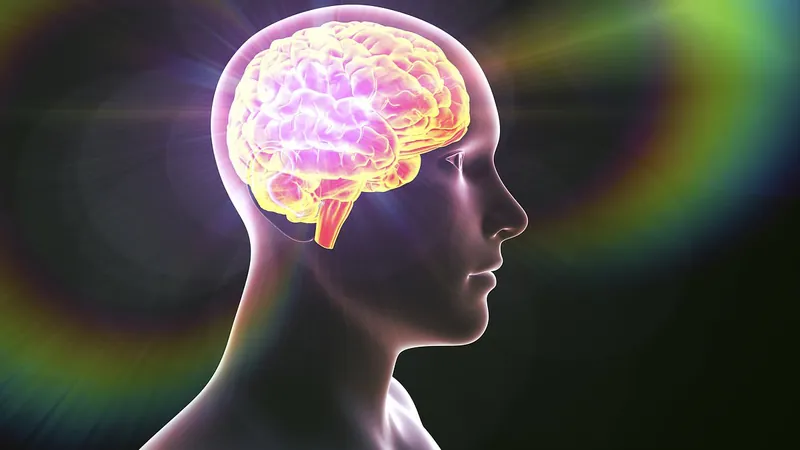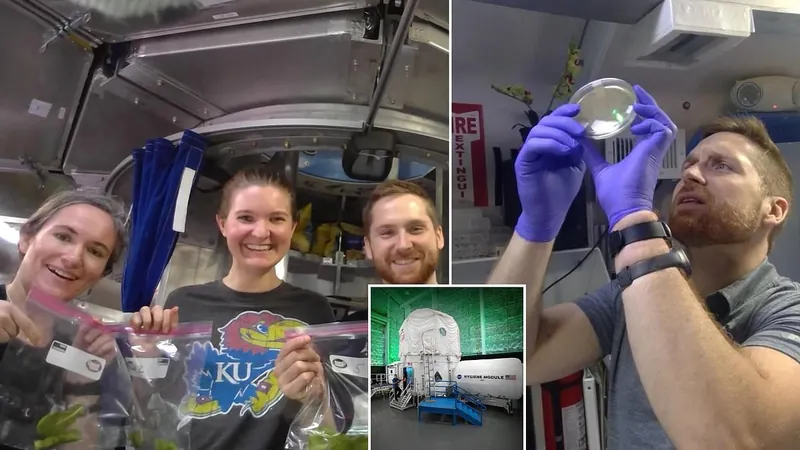
Groundbreaking Theory Suggests Human Consciousness Taps into Hidden Dimensions!
2024-09-19
Introduction
A revolutionary new theory suggests that human consciousness may originate from hidden dimensions, challenging the long-standing belief that it is merely a product of brain activity. This thought-provoking idea has been proposed by Michael Pravica, a physicist and professor at the University of Nevada, Las Vegas, who argues that our most profound moments of creativity, scientific inquiry, philosophical contemplation, and even dreaming could connect us to these elusive realms of existence.
Hyperdimensionality and Human Consciousness
Pravica's hypothesis is rooted in the concept of hyperdimensionality—the notion that beyond the four dimensions we typically perceive (height, length, width, and time), there exist additional dimensions that remain hidden from our awareness. He claims that during heightened states of consciousness, we may be able to transcend our physical limitations and gain insights from these unseen dimensions.
Scientific Debate
Yet, Pravica's theory has sparked considerable debate within the scientific community. Critics argue that his ideas are more akin to science fiction than empirical science. "The foundation of his theory borders on speculative," says a skeptical scientist, underscoring the contentious nature of his claims.
Historical Context of Consciousness Studies
Human consciousness has puzzled scientists for centuries, giving rise to numerous theories. Some researchers believe consciousness relates to the integration of information across various brain regions, suggesting that a higher degree of interconnectedness correlates with a richer conscious experience. Others propose that our conscious thought processes are influenced by top-down signaling, where higher cognitive functions inform lower-level brain activities.
Pravica's Theoretical Leap
Pravica, however, takes a bold leap into theoretical physics, asserting that uncommon experiences might signify a connection to higher dimensional planes. He likens humans to two-dimensional beings struggling to understand a three-dimensional world; just as these beings cannot fully perceive a sphere, we may be unable to grasp the complexities of higher dimensions.
String Theory and Spirituality
He further ties his idea into string theory, which posits that all matter and forces are a manifestation of tiny, vibrating strings existing in multiple dimensions. Although string theory is widely recognized in physics, linking it directly to consciousness crosses into controversial territory, especially since it raises questions about the intersection of science and spirituality.
Personal Beliefs and Interpretations
Interestingly, Pravica’s personal beliefs influence his interpretations. As an Orthodox Christian, he suggests that hyperdimensionality could provide explanations for religious phenomena, including the biblical account of Jesus’s ascension into heaven. According to Pravica, only a being capable of navigating multiple dimensions could perform such extraordinary feats.
The Ongoing Debate
The enduring debate pivots on whether aspiring to understand consciousness through hyperdimensionality is a legitimate scientific pursuit or merely an invocation of divine influence to explain the unknown. Critics warn that framing gaps in scientific knowledge as divine intervention can stifle the inquisitive nature essential for scientific exploration.
Future Prospects
While Pravica is enthusiastic about the potential for future technological advancements to validate his theories, skeptics point out the significant challenges that remain. Current technology, including the Large Hadron Collider at CERN, falls short of providing concrete evidence for higher dimensions. Some scientists argue that, without compelling proof, the notion of hyperdimensionality and its ties to human consciousness may remain in the realm of imaginative speculation.
Conclusion
So, could our consciousness indeed be tapping into realms beyond our traditional understanding—a deeper connection to the universe that reshapes our view on existence itself? As research continues and technology progresses, the answers to these profound questions may one day redefine the human experience and our place in the cosmos. Until then, the debate rages on, tantalizingly hinting at a grander reality lurking just beyond our comprehension.




 Brasil (PT)
Brasil (PT)
 Canada (EN)
Canada (EN)
 Chile (ES)
Chile (ES)
 España (ES)
España (ES)
 France (FR)
France (FR)
 Hong Kong (EN)
Hong Kong (EN)
 Italia (IT)
Italia (IT)
 日本 (JA)
日本 (JA)
 Magyarország (HU)
Magyarország (HU)
 Norge (NO)
Norge (NO)
 Polska (PL)
Polska (PL)
 Schweiz (DE)
Schweiz (DE)
 Singapore (EN)
Singapore (EN)
 Sverige (SV)
Sverige (SV)
 Suomi (FI)
Suomi (FI)
 Türkiye (TR)
Türkiye (TR)